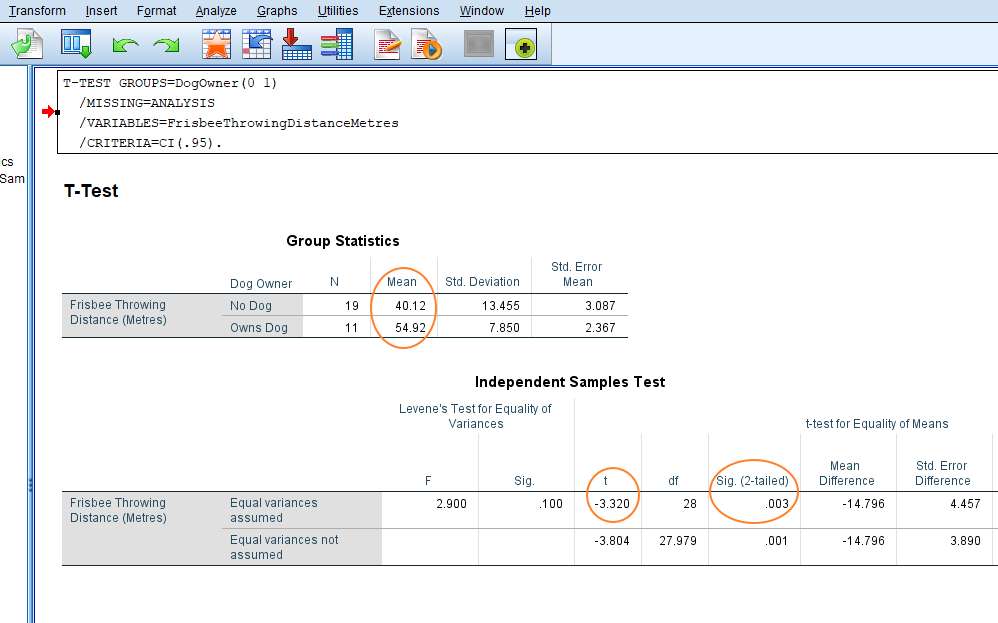

"Related groups" indicates that the same subjects are present in both groups.
STATPLUS PAIRED T TEST HOW TO
This is not uncommon when working with real-world data rather than textbook examples, which often only show you how to carry out a dependent t-test when everything goes well! However, don't worry. In practice, checking for these four assumptions just adds a little bit more time to your analysis, requiring you to click a few more buttons in SPSS Statistics when performing your analysis, as well as think a little bit more about your data, but it is not a difficult task.īefore we introduce you to these four assumptions, do not be surprised if, when analysing your own data using SPSS Statistics, one or more of these assumptions is violated (i.e., is not met). You need to do this because it is only appropriate to use a dependent t-test if your data "passes" four assumptions that are required for a dependent t-test to give you a valid result. When you choose to analyse your data using a dependent t-test, part of the process involves checking to make sure that the data you want to analyse can actually be analysed using a dependent t-test. However, before we introduce you to this procedure, you need to understand the different assumptions that your data must meet in order for a dependent t-test to give you a valid result. This "quick start" guide shows you how to carry out a dependent t-test using SPSS Statistics, as well as interpret and report the results from this test. If your dependent variable is dichotomous, you should instead use McNemar's test. For example, you could use a dependent t-test to understand whether there was a difference in smokers' daily cigarette consumption before and after a 6 week hypnotherapy programme (i.e., your dependent variable would be "daily cigarette consumption", and your two related groups would be the cigarette consumption values "before" and "after" the hypnotherapy programme). The dependent t-test (called the paired-samples t-test in SPSS Statistics) compares the means between two related groups on the same continuous, dependent variable. The TDx method was found not to be suitable for use with equine plasma due to greater variability in measurements (high CV).Dependent T-Test using SPSS Statistics Introduction It was concluded that the YSI method was a reliable method for measuring equine plasma from 0-30 mmol/l. The difference in plasma determined by the 2 methods was -1.0 ± 3.2 mmol/l, documenting that the TDx overestimated the YSI results by a mean value of 1 mmol/l. In 275 plasma samples, ranged from 0.1-42.7 mmol/l and 0.3-50.6 mmol/l for the YSI and TDx methods, respectively. CVs for samples tested from 2.8-8.0 mmol/l were 17.4-24.1% for TDx. Within-run and mean between-run coefficients of variation (CV) for plasma samples tested from 3.3-29.5 mmol/l were 0.4-3.0% for YSI.


% recovery was 101.7 ± 3.4% for YSI (acceptable) and 110.6 ± 8.4% for TDx (unacceptable). Parallelism was poor with TDx (P < 0.05). YSI exhibited good parallelism between LA standards and equine plasma LA measurements throughout the 0-30 mmol/l range (P > 0.05). Level of significance was P 12 mmol/l and with equine plasma, linearity was decreased. Plasma results were compared in 275 blood samples collected from horses exercising at various intensities using Bland-Altman analysis.
STATPLUS PAIRED T TEST SERIAL
To validate 2 LA analysers (YSI 2300 Stat Plus and TDx Lactic Acid Assay) for use with equine plasma and to compare plasma determined by the 2 methods.īoth instruments were evaluated for linearity, parallelism, recovery and precision using serial dilutions of standard LA solutions and equine plasma and then comparing results with linear regression or paired t tests. Some methods of lactate (LA) measurement have not been validated appropriately for use in horses.


 0 kommentar(er)
0 kommentar(er)
